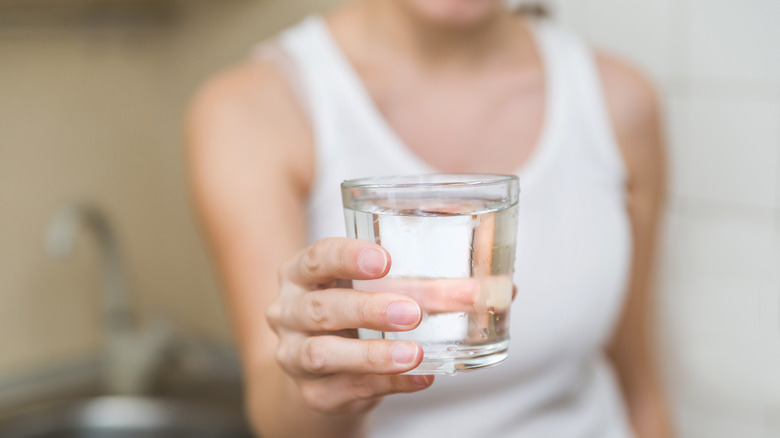The Real Difference Between Purified And Distilled Water
Bottled water is everywhere these days, and there is no shortage of variety when it comes to buying it. Purification and distillation are two processes used to clean water, and while they seem similar, there is a difference between them.
Purified water undergoes several steps before it is considered drinkable. The first step of the process involves removing organisms and other particles. The second stage of purification includes allowing the water to settle before adding aluminum sulfate and chlorine which destroy any remaining germs and bacteria. Water then undergoes a filtering stage where other contaminants are removed. In the final phase, more chlorine and other chemicals are added to destroy what's left of any toxins (via Livestrong).
Distilled water is probably the purest form of water because it undergoes a process that removes just about everything in it. That includes bad stuff like toxins, but it also includes good things such as minerals and electrolytes that the body needs (via Healthline).
Drinking purified and distilled water
The Centers for Disease Control and Prevention states that the amount of chlorine used to purify water is at a safe level for most of the population. That being said, it recommends that people who are sensitive to chemicals or who have health concerns should speak with their healthcare professional to discuss if it is suitable for them to drink. Some claims suggest drinking purified water in moderation because chlorine might disrupt gut flora and affect other nutrients that impact the nervous system.
Drinking distilled water is considered safe. This is especially true in areas where the safety of tap water might be in question. However, distilled water does not provide your body with any minerals that it needs, and, as a result, it might leach them from your body. While this sounds alarming, it shouldn't be too much of a concern if you eat a healthy diet.


